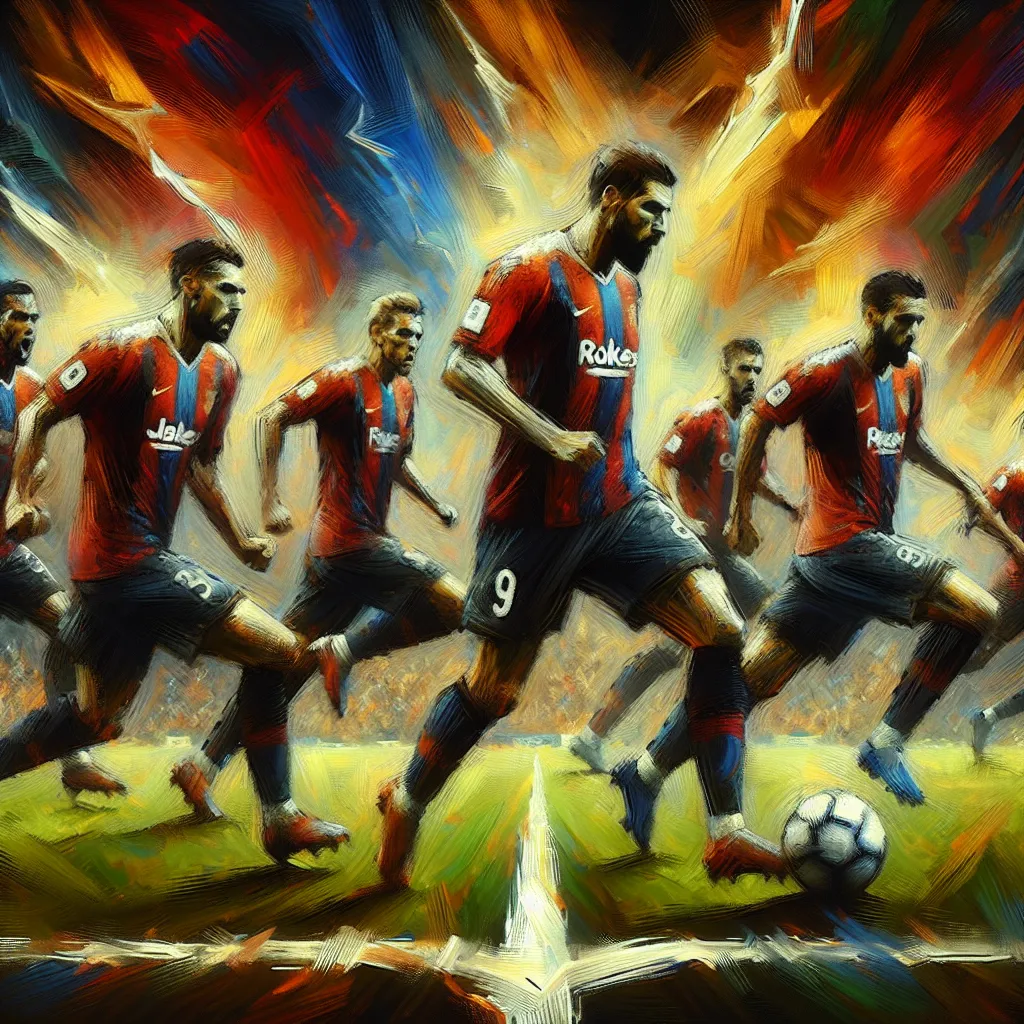
- Published on
- Authors

- Name
- Sports Tips
The Offensive Power of the 2-3-5 Formation
The beautiful game of soccer has witnessed a myriad of tactical evolutions, but few systems have left a lasting influence like the 2-3-5 formation. Often referred to as the "Pyramid," this formation dominated the early 20th century and paved the way for modern offensive strategies.
Historical Context
Emerging during the late 19th century, the 2-3-5 formation quickly became the standard due to its balanced approach between defense and attack. Let's take a closer look at its structure:
Forwards
LW IL CF IR RW
5
Half-backs
LH CH RH
3
Full-backs
LB RB
2
| Position | Acronym | Role Description |
|---|---|---|
| Left Wing | LW | Provides width, crosses, and pace. |
| Inside Left | IL | Links midfield with forwards, creativity. |
| Centre Forward | CF | Main goal scorer, central striker. |
| Inside Right | IR | Support striker, creative outlet. |
| Right Wing | RW | Similar to LW, offers width and pace. |
| Left Half | LH | Supports defense, links with attack. |
| Centre Half | CH | Defensive anchor, pivotal player. |
| Right Half | RH | Provides balance, supports attack. |
| Left Back | LB | Defending winger threats. |
| Right Back | RB | Similar to LB, strong in tackles. |
Key Strengths of the 2-3-5 Formation
- Attack in Numbers: With five forwards, the 2-3-5 ensures attacking prowess, overwhelming defenses with numerical superiority.
- Width and Crossing: The wingers, LW and RW, stretch the play, creating space for central players and delivering precise crosses.
- Central Dominance: The center half (CH) plays a crucial role in stabilizing the defense and initiating attacks, often acting as a deep-lying playmaker.
Influence on Modern Tactics
Though largely obsolete in its original form, the principles of the 2-3-5 formation continue to inspire contemporary strategies. Current formations such as the 4-3-3 and 3-4-3 borrow heavily from the expansive and aggressive nature of the Pyramid.
Transition to Modern Formations
4-3-3 Formation
- Forwards: LW, CF, RW mirror the front three of the 2-3-5.
- Midfielders: The central midfield trio retains the attacking and defensive balance.
- Defenders: Four defenders provide more solidity compared to the original Pyramid.
3-4-3 Formation
- Wide Players: Wing-backs in this system have roles similar to the wingers in 2-3-5, adding both defensive depth and attacking width.
- Central Midfield: The double pivot or a box midfield reflects the central half-back line of the Pyramid.
Coaching Wisdom: Applying the 2-3-5 Concepts
Incorporating the offensive principles of the 2-3-5 can enrich teams at all levels. Here’s how coaches can leverage its strengths:
Training Drills
- Overloading the Attack: Design drills that emphasize attacking with five or more players, focusing on movement, passing, and finishing.
- Wing Play: Implement crossing and finishing exercises to exploit width provided by wingers.
- Central Compactness: Train midfielders to maintain compactness while linking play between defense and attack.
Tactical Sessions
- Positional Fluidity: Encourage players to switch positions during play, emulating the fluidity of the historical Pyramid.
- High Pressing: Utilize the numerical advantage in attacking to press and win the ball high up the pitch.
Final Whistle
The 2-3-5 formation, despite its historical roots, remains a testament to the beauty of attacking soccer. By understanding and applying its principles, modern coaches and players can develop more dynamic and effective attacking strategies, echoing the glorious past while innovating for the future.
Embrace the history, learn from the past, and play for the future. The Pyramid is more than a formation; it's a philosophy.
